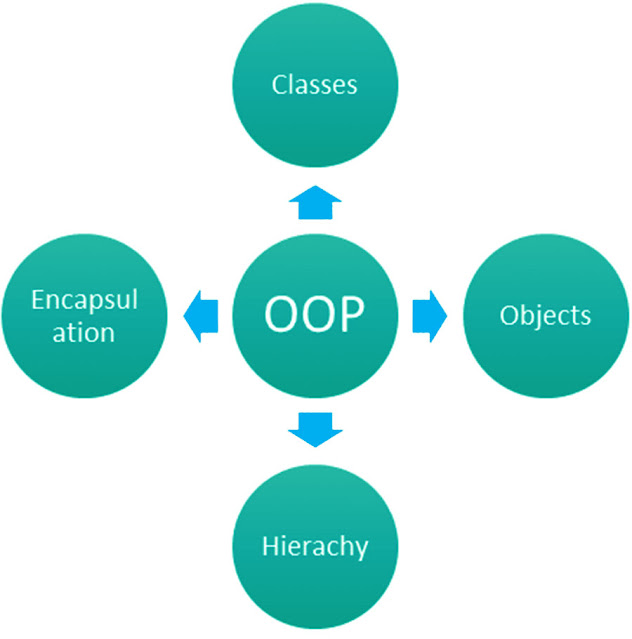The C# programming language, pronounced ‘C-Sharp’, is heralded as one of the finest in the realm of coding, fully grounded in the principles of OOP - Object-Oriented Programming. It shares a familial bond with the C and C++ languages. Conceived by Anders Hejlsberg, Scott Wiltamuth, and Peter Golde in July 2000 as part of the .NET project, it was first introduced to the public in 2002 by Microsoft Corporation.
Its acclaim stems from its simplicity, readability, ease of learning, and the remarkable capabilities it offers for programming a vast array of applications. For those delving into the basics of C#, the international ISO standard ISO/IEC 23270:2006(E) from 2006 offers a foundational understanding, while also highlighting the latest enhancements brought forth by newer versions of the language.
Since 2014, Microsoft has revolutionized the C# programming language with a transformative compiler, known today as the C# language compiler. This pivotal change introduced ‘Roslyn’, the code name for the compiler that transitioned from a closed ‘black box’ to open-source code. This shift not only democratized the development process but also paved the way for more significant enhancements to the language itself.Prioritizing C# for programming, learning, and
professional development can significantly simplify tasks and boost
productivity compared to other languages. While proficiency in multiple
programming languages is essential to being considered a professional
developer, C# should remain a priority due to its comprehensive features and
the continuous influx of new capabilities.
Over more than two decades, C# has traversed a long journey, altering numerous coding practices and programming processes alongside the .NET Framework. Unlike C++, C# is simpler and more accessible for programming, yet it is intrinsically linked with the .NET environment, without which it cannot exist or function, rendering it marginally slower.
Deciphering C#: A Comparative Analysis with Other Programming Languages
In the landscape of programming languages, C# and C++ offer distinct advantages. While C++ is considered faster, a trait that becomes less relevant with today’s faster computers except in certain areas like game development, it is not an insurmountable advantage. C++ boasts the ability to program directly on Linux and OS X systems, compiling machine code straight from the operating system, whereas C# relies on the Microsoft .NET Framework as an intermediary between the application and the operating system.
C++ does not support programming for WPF - Windows Presentation Foundation applications, and while Windows Forms is becoming outdated, it remains a necessary skill. In contrast, C# enables more straightforward and easier coding, allowing developers to accomplish more with less complexity.
Visual Basic, once considered on par with C#, has not maintained the same presence in the business world and is rarely mentioned in 2023. Swift, initially hailed as a programming revolution and exclusive to the OS X operating system, has adopted many features from C#.
Java and PHP are the go-to languages for internet-exclusive applications, with Java being particularly suited for Android app development. These languages are often in higher demand in the job market.
Integrating Microsoft technology into a company’s
operations, despite various licensing options, is not inexpensive, which is why
C# may not always top the lists of programming languages. However, for learning
C#, tools like Microsoft Visual Community Studio and Microsoft SQL ExpressEdition are freely available and essential to have programmed on your computer.
Unveiling .NET Framework: The Keystone of Modern Development
If one were to conceptualize the Windows operating system as a library, that is, a collection of all the functional calls in the Windows API interface used in programs—such as displaying dialog boxes, interfaces for multiple or single documents, security functions, and services for database access; then the role of the .NET Framework is to provide its own .NET runtime environment.
It manages threads, offers various background services, and grants a certain level of autonomy from the operating system, even though the .NET Framework is not an operating system itself. It acts as a layer between Windows and your application. Additionally, the .NET Framework’s role is to provide a modern, object-oriented, and simplified environment for easier programming and execution of programs.
Today, the .NET Framework has evolved to such an extent that it also provides environments that enable emulators for programming mobile applications. When you create a program, it utilizes a specific version of the .NET Framework; for your program to function on another computer, that computer must also have the same version of the .NET Framework installed for your application to work. A key feature of the .NET Framework is its language interoperability, as it contains multiple programming languages.
You don’t need a separate .NET Framework for each programming language; it’s irrelevant in which programming language you created a *.dll file; it can be used by all languages in their projects.
However, there is a difference between the 32-bit and 64-bit .NET Framework, and you are better off if you have a 64-bit operating system. Unlike, for example, the C++ programming language, your code is not immediately translated into machine code.
Instead, the CLR - Common Language Runtime translates your program into CIL - Common Intermediate Language, formally called MSIL - Microsoft Intermediate Language and often referred to simply as IL - Intermediate Language. This is actually Microsoft’s low-level intermediary language. Therefore, all .NET executable programs and all *.dll files can work together, saving you from the old complications we called *.dll hell. JIT - Just-in-time compilation then translates IL - Intermediate Language into native binary code.
Advancements in C# Programming: A Journey Through Language Evolution and Innovation
With the advent of .NET technology in 2002, the C# language brought a revolution in programming. Prior to this, there was Visual Basic 6.0, which evolved into Visual Basic .NET, undergoing nearly 90% changes. To avoid confusion, today’s Visual Basic .NET is simply called Visual Basic, as Visual Basic 6.0 has long been retired. The C# language emerged as a completely new programming language, familiar to those accustomed to C and C++ languages.
Since its first version, C# 1.0 in 2002, it has provided full support for classes and OOP - Object-Oriented Programming, inheritance from interfaces and other classes, virtual functions, and operator overloading; a consistent and well-defined set of basic types. It came with built-in support for automatic generation of XML - Extensible Markup Language documentation, automatic cleanup of dynamically allocated memory, the ability to mark classes with user-defined attributes, full access to the base class library, and straightforward access to the Windows API interface; all the way to the capability of writing ASP.NET dynamic applications.
At that time, it was indeed a programming revolution, changing almost everything known about programming up to that point. Subsequent changes were smaller but extremely significant. For instance, auto-properties first appeared in 2003. By 2005, the C# language had been enriched with iterators, the generic concept, and anonymous methods. In 2008, more emphasis was placed on database work, introducing lambda expressions, extension methods, and the entire LINQ - Language Integrated Query.
Since 2012, the C# language has supported named and optional arguments, introduced the dynamic type, and late binding for objects. The TPL - Task Parallel Library allows full utilization of multi-core processors. Special emphasis was placed on the async method modifiers and the await operator. The await operator can be used within try-catch-exception and finally blocks. The try-catch-exception now even includes filter expressions.
Auto-properties have also been introduced for get-only statements, and that’s not all. Properties can now be initialized directly in a single line of code. The new Elvis operator ?. spares many null and other conditional constructs. String interpolation, or the insertion of strings, has been facilitated with the dollar sign, $. For example, a JObject can now be initialized in a single expression. There’s no longer a need to specify the nameof operator, as it is implied, or the method body can now be passed with a lambda expression =>, among many other new features, including ongoing enhancements currently being worked on at Microsoft Corporation.
Indeed, one can now Google and see what changes in the C# language, Microsoft Corporation is currently working on and preview what’s to come in addition to all the new features.
It’s understandable if you’re a beginner or have no experience with the C# language that all this might sound confusing. The history of this language is vast, but in time, it will become clear. The C# language, like any other programming language, is best learned by coding, and then theory. Because applying everything mentioned in code is much simpler.
Essential Tools and Resources for Mastering C# 12: A Comprehensive Guide for Beginners
To start learning the C# programming language, specifically version 12, you will need to perform certain installations. First, decide which operating system you want to use. Then, install .NET version 8 or higher, depending on when you are reading this post. You can choose to code in Visual Studio Code, Microsoft Visual Studio, or any IDE - Integrated Development Environment that suits you.
Our recommendation is to start with VSCode and then move on to Microsoft Visual Studio later. Overall, watch videos on how to install VSCode on Windows and Linux operating systems and Microsoft Visual Studio on Windows 11. Remember, the tools and IDEs you choose can significantly impact your learning experience, so select the ones that best fit your learning style and project needs. Starting from the next post, we will begin with the first lesson and your first program coded in C# version 12, which assumes that you have prepared and installed everything necessary for coding.





No comments:
Post a Comment